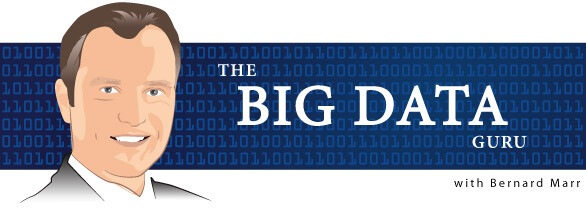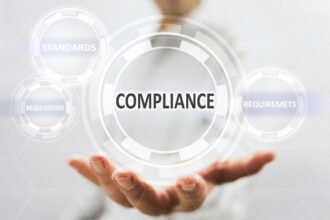
Some say big data is all talk and no action. I couldn’t disagree more. As someone that helps companies understand and harness big data, I see new and fascinating applications every day, where people gain real benefits.

Some say big data is all talk and no action. I couldn’t disagree more. As someone that helps companies understand and harness big data, I see new and fascinating applications every day, where people gain real benefits.
I believe that most aspects of business and society will be impacted by big data analytics, but saying big data is used for everything in not helping with the current confusion of how big data is adding value.
To bring some more clarity and structure to the debate about big data, I have tried to classify the application of big data into 9 categories. For me, they represent the key areas in which big data analytics are currently applied to generate the biggest value. Before I describe them, I just want to say that there are areas of overlap between most of these categories.
So, here are the “high value big data use cases” as I see them in practice today:
1. Understanding, targeting, and serving customers
This is one of the biggest and most publicized areas of big data applications today. The main focus here is to use big data to better understand customers and their behaviors and preferences. Companies are keen to expand their traditional data sets with social media data, browser logs as well as text analytics and sensor data to get a more complete picture of their customers. The big objective, in many cases, is to create predictive models. You might remember the example of U.S. retailer Target, who is now able to very accurately predict when one of their customers will expect a baby. Using big data, Telecom companies can now better predict customer churn, Wal-Mart can predict what products will sell, car insurance companies understand how well their customers actually drive, and governments are able to understand voter preferences.
2. Understanding and optimizing business processes
Big data is also increasingly used to optimize business processes. Retailers are able to optimize their stock based on predictions generated from social media data, web search trends and weather forecasts. One particular business process that is seeing a lot of big data analytics is supply chain or delivery route optimization. Here, geographic positioning or radio frequency identification sensors are used to track goods or delivery vehicles and optimize routes by integrating live traffic data, etc. HR business processes are also being improved using big data analytics. This includes the optimization of talent acquisition – Moneyball style, as well as the measurement of company culture and staff engagement using big data tools.
3. Personal quantification and performance optimization
Big data is not just for companies and governments but also for all of us individually. We can now benefit from the data generated from wearable devices such as smart watches or smart bracelets, which allow us to track our calorie consumption, our sleep patterns, etc. We can also benefit from big data analytics when we are trying to find love. Most online dating sites apply big data tools and algorithms to find us the most appropriate matches.
4. Improving Health (and R&D in general)
The computing power of big data analytics enables us to decode entire DNA strings in minutes and will allow us to find new cures and better understand and predict disease patterns. Just think of what happens when all the individual data from smart watches and wearable devices can be used to apply it to millions of people and their various diseases. The clinical trials of the future won’t be limited by small sample sizes but could potentially include everyone! Big data techniques are already being used to monitor babies in a specialist premature and sick baby unit. By recording and analyzing every heart beat and breathing pattern of every baby, the unit was able to develop algorithms that can now predict infections 24 hours before any physical symptoms appear. That way, the team can intervene early and save fragile babies when every hour counts.
5. Improving Sports Performance
Most elite sports have now embraced big data analytics. We have the IBM SlamTracker tool for Tennis tournaments, we use video analytics that track the performance of every player in a football or baseball game, and sensor technology in sports equipment such as basket balls or golf clubs allows us to get feedback (via smart phones and cloud servers) on our game and how to improve it. Many elite sports team also track athletes outside of the sporting environment – using smart technology to track nutrition and sleep, as well as social media conversations to monitor emotional wellbeing.
6. Optimizing Machine and Device Performance
Big data analytics help machines and devices become smarter and more autonomous. For example, big data tools are used to operate Google’s self-driving car. The Toyota Prius is fitted with cameras, GPS as well as powerful computers and sensors to safely drive on the road without the intervention of human beings. Big data tools are also used to optimize energy grids using data from smart meters. We can even use big data tools to optimize the performance of computers and data warehouses.
7. Improving Security and Law Enforcement
Big data is applied heavily in improving security and enabling law enforcement. I am sure you are aware of the revelations that the National Security Agency (NSA) in the U.S. uses big data analytics to foil terrorist plots (and maybe spy on us). Others use big data techniques to detect and prevent cyber attacks. Police forces use big data tools to catch criminals and even predict criminal activity and credit card companies use big data use it to detect fraudulent transactions.
8. Improving and optimizing cities and countries
Big Data is used to improve many aspects of our cities and countries. For example, it allows cities to optimize traffic flows based on real time traffic information as well as social media and weather data. A number of cities are currently piloting big data analytics with the aim of turning themselves into Smart Cities, where the transport infrastructure and utility processes are all joined up. Where a bus would wait for a delayed train and where traffic signals predict traffic volumes and operate to minimize jams.
9. Financial Trading
My final category of big data application comes from financial trading. High-Frequency Trading (HFT) is an area where big data finds a lot of use today. Here, big data algorithms are used to make trading decisions. Today, the majority of equity trading now takes place via data algorithms that increasingly take into account signals from social media networks and news websites to make buy and sell decisions in split seconds.
For me, the 9 categories I have outlined here represent the areas in which big data is applied the most. Of course, there are so many other applications of big data and there will be many new use case categories as the tools become more widespread.
What do you think? Do you agree with the categories? Which others would you add?
Please follow me if you would like to receive the future posts of my Big Data Guru column and feel free to also connect via Twitter, LinkedIn, Facebook and The Advanced Performance Institute


